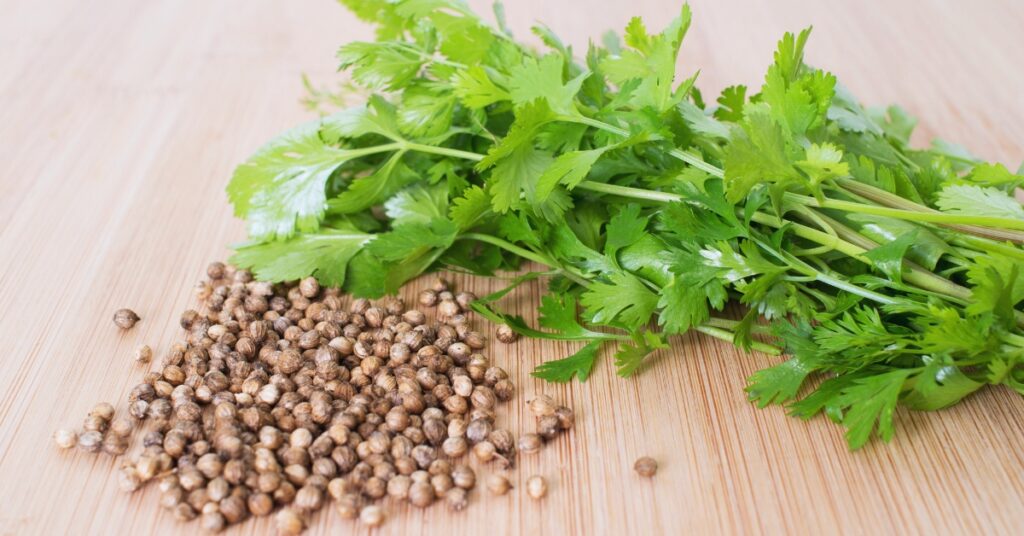Are you puzzled by the culinary confusion between cilantro and coriander? These botanical siblings from the Apiaceae family might share the same plant source, but they pack distinctly different flavor profiles that can transform your cooking. Whether you’re a home chef, a culinary enthusiast, or someone navigating international recipes, understanding the nuanced differences between these herbs is key to elevating your gastronomic experience. If you are food lover the stay with foodieswine to read about tasty food recipies.
Throughout Mexican salsas, Indian curries and other types of dishes cilantro leaves and coriander seeds both standout with the best qualities of the spices that can impact the food aromas, tastes and nutritional values improving the results dramatically. Now let’s get deeper into the tasting notes of this incredibly handy ingredient and discover more about the plant it originated from.
What is Cilantro?
Coriander, referred to scientifically as Coriandrum sativum, is a bushy plant of green leaves, with tender feathery leaves that have a Tamil odor. Much prized in Latin American and Asian dishes, this herb offers a sharp, insistently orange-edged taste which may enhance salsa, garnish tacos, and enhance numerous dishes.
What is Coriander?
If grown in seed form then the product is Coriander which offer warm, nutty and slightly citrus in taste. These small round seeds are commonly used in blends throughout the world and add richness to curry’s marinades, biscuits and bread and are nutritionally and medicinally highly regarded.

Differences Between Cilantro vs Coriander
Botanical Part
Cilantro is the name given to the flighty green tender portion of the plant Coriandrum sativum
Coriander is the other name for the dried seeds that develop from the flowering part of the same plant
Culinary Usage
When used, cilantro is fresh, mainly in salsas, salads, or as garnishing on meals of Mexican or Southeast Asian cuisines.
Coriander seeds are usually used in processed and ground format in their natural dried form in typical cooking, seasoning, spices or marinade and baking in Indian, Middle Eastern and Mediterranean food habits
Flavor Profile
Cilantro leaves are bright green in color with an over powering citrus and somewhat pungent taste while having a strong smell that people either love or hate due to the soapy feeling they get from it.
Coriander seeds have warm, slightly sweet, nutty taste profile with a hint of citrus note, although not as sharp as the leaf’s flavor
Nutritional Composition
Nutritionally, cilantro leaves have vitamin A, vitamin C, vitamin K and are loaded with antioxidant.
Coriander seeds are rich in minerals such as iron, magnesium and it works on digestive issues and has possible anti – inflammatory benefits
Sensory Perception
It is incredibly bad news for cilantro fans that its taste resistance is genetically predetermined; certain people simply have a gene that causes the herb to taste like soap.
Coriander seeds are pretty much more versatile more in terms of taste that doesn’t elicit this rather peculiar genetic taste difference.

Nutritional Difference between Cilantro and Coriander
Cilantro (% RDI) | Coriander (% RDI) | |
| Dietary fiber | 1.1 | 16.8 |
| Vitamin A | 13.5 | 0 |
| Vitamin C | 4.5 | 3.5 |
| Vitamin K | 38.8 | 0 |
| Manganese | 2.1 | 9.5 |
| Iron | 1 | 9.1 |
| Magnesium | 0.6 | 8.2 |
| Calcium | 0.7 | 7.1 |
| Copper | 1.1 | 4.9 |
| Phosphorus | 0.5 | 4.1 |
| Selenium | 0.1 | 3.7 |
| Potassium | 1.5 | 3.6 |
| Zinc | 0.3 | 3.1 |
How to Choose and Store Cilantro and Coriander
Choosing and storing cilantro and coriander properly can enhance their freshness and flavor. When selecting cilantro, look for vibrant green leaves without yellowing or wilting. Avoid bunches with slimy stems. For coriander seeds, pick ones that are plump, aromatic, and uniform in color. To store cilantro, trim the stems and place them in a jar of water like a bouquet, covering the leaves loosely with a plastic bag, then refrigerate. Change the water every couple of days. Coriander seeds should be kept in an airtight container in a cool, dark place to preserve their aroma and potency for months.
FAQs
Is coriander and cilantro the same thing?
Cilantro and coriander come from the same plant (Coriandrum sativum), but in the U.S. and Canada, “cilantro” refers to the fresh leaves, while “coriander” refers to the dried seeds. In many other countries, “coriander” refers to both.
Why does cilantro turn into coriander?
The plant produces fresh leaves (cilantro) early in its life. As it matures, it flowers and produces seeds, which are dried and called coriander.
Can I substitute coriander for cilantro?
No, coriander (seeds) and cilantro (leaves) have very different flavors. Cilantro has a fresh, citrusy taste, while coriander seeds are warm and nutty.
Why is cilantro called coriander in England?
In the UK and most English-speaking countries, the herb is called “coriander” regardless of whether it’s the leaves or seeds.
What is cilantro in Urdu?
Cilantro is called “dhaniya” (دھنیا) in Urdu.
What is cilantro called in India?
In India, cilantro is also known as “dhaniya” (धनिया) and is widely used in cooking.

